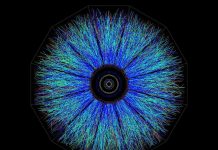
Physicists are on a quest to make the most precise timekeepers in the universe, atomic clocks, even more accurate. They’re exploring an advanced concept called spin-squeezed states.
These are special setups where the particles in a system work together in a way that reduces their natural, quantum-level fluctuations. This teamwork makes it possible to measure time with extraordinary precision.
The challenge has been creating and maintaining these spin-squeezed states, especially for the kind of atomic transitions ideal for clock-making, without external disturbances.
A new approach involves using an optical cavity, a space bounded by mirrors that reflects light many times over. Within this cavity, atoms can sync up their light emissions to produce a bright, collective burst of light.
This process, known as superradiance, can be tweaked to either entangle the atoms further or, if not carefully managed, disrupt the delicate quantum state needed for precision measurements.
In a novel twist, researchers have found that by using atoms with more than the simplest two energy levels, they can make the atoms cancel out each other’s light emissions.
This results in a “dark state” where, despite the potential for superradiance, no light is emitted into the cavity.
These dark states are not only fascinating for their quietness but also because they hint at the possibility of entanglement, a quantum link between particles that is key for creating the spin-squeezed states needed for ultra-precise measurements.
The team, including researchers from JILA and NIST, has now discovered how to make these dark states not just silent but also spin-squeezed and highly entangled.
They describe their methods in two recent studies, offering a blueprint for creating entangled clocks that could revolutionize the field of quantum metrology.
They explain that these dark, spin-squeezed states emerge in a “superradiant potential,” akin to a roller coaster for atoms.
In this metaphorical ride, atoms emit light as they fall but can become trapped in valleys where they stop emitting light. It’s in these valleys that the atoms can be prepared in special ways to become highly entangled without emitting light.
One method involves using a laser to excite the atoms before placing them at specific points within the cavity that act as traps.
Turning off the laser lets the atoms relax and reorganize their noise, leading to a significant reduction in quantum fluctuations.
Another strategy transfers already entangled states into these dark states, preserving their quantum characteristics without the need for continuous laser driving.
These discoveries open up exciting possibilities. They suggest that it’s possible to create atomic clocks with unprecedented accuracy by harnessing the power of quantum entanglement in a way that avoids the pitfalls of superradiance.
The research combines complex simulations and innovative experimental techniques, offering a new path toward the ultimate goal of quantum-enhanced precision in measuring time.
The research findings can be found in Physical Review Letters.
Copyright © 2024 Knowridge Science Report. All rights reserved.



